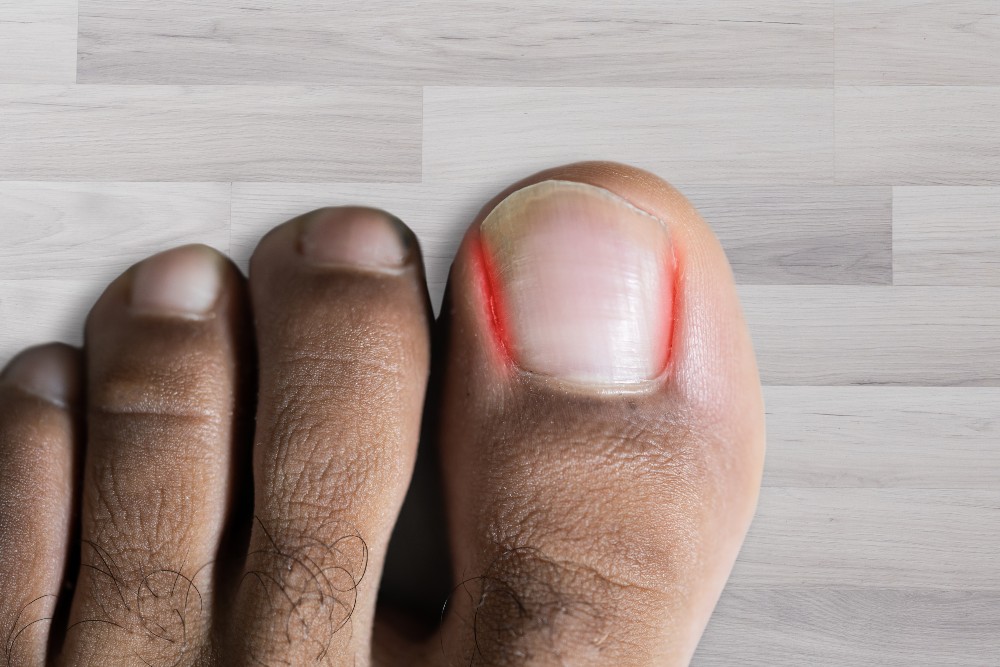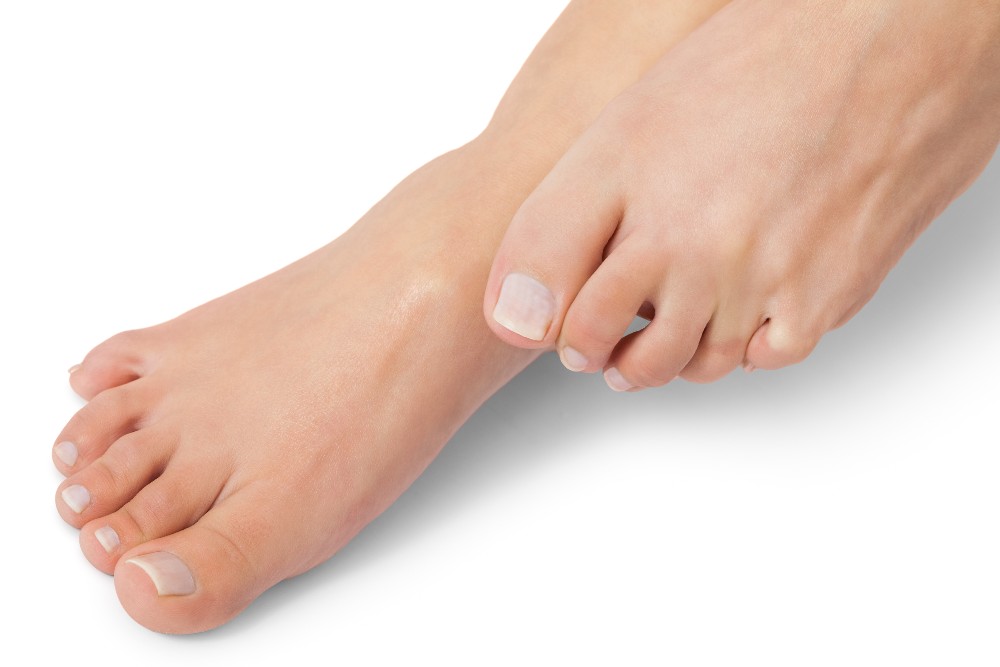Home Care for Ingrown Toenails
Ingrown toenails can be an incredibly painful and bothersome condition that affects many individuals. Whether you’re an athlete, someone who spends a lot of time on your feet, or just unlucky enough to experience this condition, dealing with ingrown toenails can be quite frustrating.
In this blog post, we’ll explore what ingrown toenails are, how they appear, and most importantly, a range of effective home remedies that you can try to find relief from the discomfort they bring. Remember, while home care can often help with mild cases, it is essential to consult a qualified podiatrist for more severe or recurrent ingrown toenail issues.
What are Ingrown Toenails?
An ingrown toenail occurs when the edge of the toenail grows into the surrounding skin, rather than over it. This can lead to redness, swelling, pain, and even infection.
The most common location for an ingrown toenail is the big toe, but it can affect any toenail on either foot. Some factors that contribute to ingrown toenails include wearing tight shoes, improper nail trimming, hereditary predisposition, and injuries to the toe area.
How Do Ingrown Toenails Appear?
Ingrown toenails often begin with mild discomfort and redness around the affected toenail. As the nail grows into the skin, it may cause increased pain and inflammation.
In some cases, the area around the ingrown toenail may become infected, leading to drainage of pus and worsening symptoms. If left untreated, the infection can spread, causing more severe complications.
Home Remedies for Ingrown Toenails
While severe or infected ingrown toenails may require professional medical attention, several home remedies can provide pain relief for mild cases and aid in preventing further complications.
Different Types of Helpful Soaks
Soaking the affected foot in warm water with added ingredients can help soften the skin and reduce pain and inflammation. Here are three effective soak options:
- Warm Soapy Water Soak: Fill a basin or tub with warm water and add a mild soap. Soak your foot for 15-20 minutes, two to three times a day. This will help reduce swelling and cleanse the area.
- Apple Cider Vinegar Soak: Apple cider vinegar has natural antibacterial properties, making it a great choice for treating ingrown toenails. Mix equal parts of apple cider vinegar and warm water in a basin or tub, and soak your foot for 15-20 minutes. This soak can help reduce inflammation and prevent infection.
- Hydrogen Peroxide Soak: Hydrogen peroxide is known for its antiseptic properties. Mix equal parts of 3% hydrogen peroxide and warm water in a basin or tub, and soak your foot for 15-20 minutes. This can help disinfect the area and promote healing.
- Epsom Salt Soak: Epsom salt can help reduce inflammation and pain associated with ingrown toenails. Dissolve Epsom salt in warm water and soak your foot for about 15 minutes.
Wear Comfortable Footwear
Avoid wearing tight shoes or those with narrow toe boxes, as they can put additional pressure on the toes and exacerbate ingrown toenail pain. Opt for shoes that provide ample room for your toes to move freely and comfortably.
Antibiotics
For mild cases of ingrown toenails without signs of infection, over-the-counter antibiotic ointments can be beneficial. They help keep the affected area clean and reduce the risk of infection. Apply the ointment as directed on the packaging after thoroughly cleaning the foot.
If you suspect an infection or if the ingrown toenail has already led to redness, warmth, and pus discharge, oral antibiotics may be necessary. In such cases, it is crucial to consult our podiatrist for proper diagnosis and prescription.
Elevate Your Foot
When experiencing pain and swelling due to an ingrown toenail, elevating your foot can help reduce pressure and promote better blood circulation in the affected area. Prop your foot up on pillows or a cushion while sitting or lying down.
Dental Floss Method
For ingrown toenails that have not yet become infected, the dental floss method can be attempted. Gently lift the ingrown edge of the nail and place a small piece of waxed dental floss or cotton underneath to encourage the nail to grow over the skin.
Toe Protection
To protect the affected toe and prevent further irritation, consider using toe caps or cushions specifically designed for ingrown toenails. These protective covers can be found at drugstores or online and can provide a barrier between the ingrown nail and your footwear.
Warm Compresses
Applying warm compresses to the ingrown toenail can help reduce inflammation and ease pain. Soak a clean washcloth in warm water, wring out the excess, and place it gently on the affected toe for about 15-20 minutes. Repeat this several times a day to find relief.
Over-the-Counter Pain Relievers
For temporary relief from the pain associated with ingrown toenails, over-the-counter pain relievers such as ibuprofen or acetaminophen can be helpful. Always follow the recommended dosage and consult with a healthcare professional if you have any health conditions or are taking other medications.
Avoid Home Surgeries
While there are various DIY methods found online, such as attempting to remove the ingrown portion of the nail yourself, it is crucial to avoid these methods. These approaches can often worsen the condition or lead to infection. Seek professional help from our office for safe and effective treatment.
Keep Feet Clean and Dry
Maintaining good foot hygiene is vital for preventing infection and promoting healing. Wash your feet daily with mild soap and water, making sure to dry them thoroughly, especially between the toes. Moisture can contribute to bacterial growth, so keeping the area dry is essential.
Avoid Aggravating Activities
If you have an ingrown toenail, try to avoid activities that put excessive pressure on the affected toe. Activities like running, jumping, or wearing tight-fitting shoes can exacerbate the condition and lead to further discomfort.
Don’t Ignore Signs of Infection
If you notice signs of infection, such as increased redness, warmth, swelling, pus discharge, or fever, it is crucial to seek medical attention promptly. Infections around the toe area can spread rapidly, so timely treatment is essential.
Practice Good Footwear Habits
Wearing well-fitting and supportive shoes is essential for foot health, especially if you are prone to ingrown toenails. Choose shoes with a wide toe box that allows your toes to move freely without rubbing against the sides. Avoid high heels and shoes with pointy toes.
Contact Us for Treating Ingrown Toenails
While these home remedies can provide relief for mild cases, it is essential to seek professional medical attention if the ingrown toenail is severe, recurrent, or shows signs of infection. At Burlington County Foot & Ankle Associates, our team can diagnose and treat ingrown toenails with precision and care. We offer a range of effective treatments, including nail trimming, removal of the ingrown portion of the nail, and other medical interventions when necessary.
Ingrown toenails may seem like a minor annoyance, but they should not be ignored. Early treatment and proper home care can prevent the condition from worsening and reduce the risk of complications. If you’re experiencing discomfort or suspect an ingrown toenail, don’t hesitate to contact us. Our friendly staff is ready to assist you and help you get back on your feet, pain-free.
© Burlington County Foot & Ankle, Assoc., Inc. All Rights Reserved.
Privacy Policy | Terms & Conditions
Web Design by CP Solutions.
Marketed by VMD Services.


